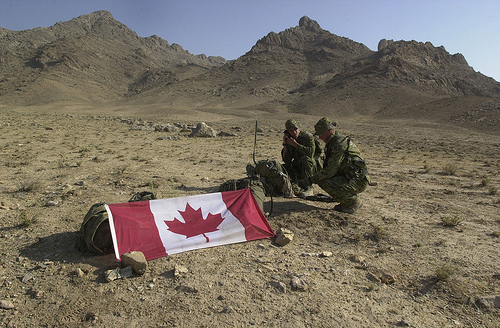In 1938, less than a year prior to the German invasion of Poland, and the beginning of World War II, Otto Hahn and his assistant Fritz Strassmann discovered nuclear fission. By August 2, 1939, a letter written by Albert Einstein made it to the desk of President Franklin Delano Roosevelt. It expressed serious concern regarding the immediate possibility of the weaponization of this and other discoveries by the Germans. Eventually, the US government invested in the Manhattan Project, which began in December 1941. Finally, on July 16, 1945, a weapons test occurred at the Trinity Site near Alamogordo, New Mexico. No one could have been prepared for what they witnessed; a blinding flash visible for 200 miles every way; a 40,000-foot-high mushroom cloud; and civilian windows blown out within a 100 mile radius of the blast. Less than a month later, the only nuclear weapons to have ever been used were dropped on the Japanese cities of Hiroshima and Nagasaki on August 6 and 9 respectively.
As nuclear and weapons technologies improved, operational ballistic missiles with various ranges were initially developed from WWII-era German designs. With ranges between 5,500 and 16,000 kilometers (Russian SS-18 Satan), modern Intercontinental Ballistic Missiles (ICBMs) are capable of carrying conventional, chemical, biological, and nuclear warheads. While these capabilities have been reduced by international treaties, states’ mere possession of these types of technologies contributes to the deterrence power of the entities possessing them. NATO member states’ possession of these technologies, for example, contributes to the overall power of the alliance’s collective defence. A similar power resides with the means of defending against such capabilities.
To defend against all types of ballistic missiles, technologies which aid in the detection and tracking of them – as well as weapons that are capable of intercepting and destroying missiles -have been developed. Depending on the type of ballistic missile launched, its origin, and the type of defending missile, intercepting of offensive missiles can occur endo-atmospherically or exo-atmospherically.
Following the successful Chinese testing of a thermonuclear weapon on June 17th, 1967, the United States launched the Sentinel Program. The Program was aimed at countering the threat posed by China, and supporting the continental strategic defence of North America, which necessarily includes Canada.
Canada’s approach to nuclear policy since the early days of the Cold War has been described by many politicians, scholars, and policy analysts as two-pronged. One prong is that of supporting continental strategic defence, which Canada has always done by ‘tacitly endorsing and facilitating’ offensive American nuclear policies as Philippe Lagassé claims. The second prong is that of supporting strategic stability and arms control. Canada was one of the earliest states to sign and ratify the Non-Proliferation Treaty and Comprehensive Nuclear-Test-Ban-Treaties, and is also presently a major champion of the proposed Fissile Materials Cut-off Treaty.
For some government officials, joining the Sentinel Program in 1967 would have undermined Canada’s ability to pursue these two policies, which some view as incompatible. While the US did not require Canada’s participation in its ballistic missile defence program, President Bush called on both the Martin and Harper Governments to join the program. In 2005, the Martin Government’s decision not to participate was heavily influenced by widespread anti-American sentiments among Canadians who judged the Bush Administration’s foreign policy, and military involvement in Afghanistan and Iraq, negatively. At the time, the Martin Government’s decision ran contrary to the opinions and recommendations of military and civilian defence officials alike.
More recently, the emergence of North Korean military posturing, Russian adventurism, increased religious extremism, and strained international relations has revealed an increased interest in Canada’s participation in ballistic missile defence. Since 2005, support for ballistic missile defence from both sides of the political spectrum has increased (notably from incumbent liberal officials). Some suggest that this support may stem from the fact that the decision to intercept an incoming missile threat is made solely by the US, not NORAD over which Canadian and American military commanders jointly command. Others, however, suggest that this increased support is borne of the fact that the US has explicitly stated via numerous channels that its policy is unequivocally not to defend Canada.
Going forward, and effectively determining whether or not Canada should reconsider its participation in ballistic missile defence will necessarily require considering its interests. For example, Canada has a vested national interest in the defence of its territorial base. This is especially important given the US’s stance on defending Canada in the event of a ballistic missile strike. Another interest for Canada is the protection of its satellites, which are vital to Canadian military operations and effectiveness, both domestically and abroad. Third, the security of the North American continent is of interest to Canada, the United States, their allies, and the stability of the international world order. Fourth, the maintenance of positive Canadian-American relations are of vital importance to Canada for many reasons. Despite its never having played an integral role in the United States’ pursuit of strategic ballistic missile defence, signing onto the program could foster interoperability, and serve as a gesture of general goodwill that could improve relations, and safeguard them into the future. Fifth, and finally, given Canada’s NATO alliance commitments, signing onto ballistic missile defence would reaffirm both Canada’s physical capability, and overall commitment to meaningfully contribute to the Alliance’s mandated goal of fostering international peace and stability.
Featured Image: A standard missile 3 is launched from USS Lake Erie (CG 70) during a joint Missile Defence Agency/U.S. Navy ballistic missile flight test over the Pacific Ocean, April 23, 2007, by Mass Communication Specialist 2nd Class Maebel Tinoko (released by US Navy).
Disclaimer: Any views or opinions expressed in articles are solely those of the authors and do not necessarily represent the views of the NATO Association of Canada.




